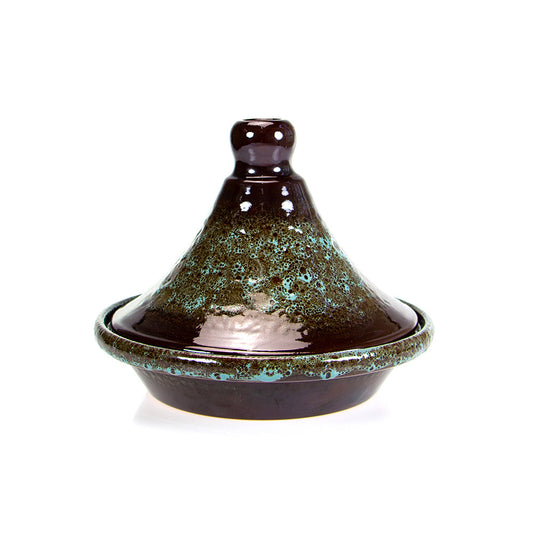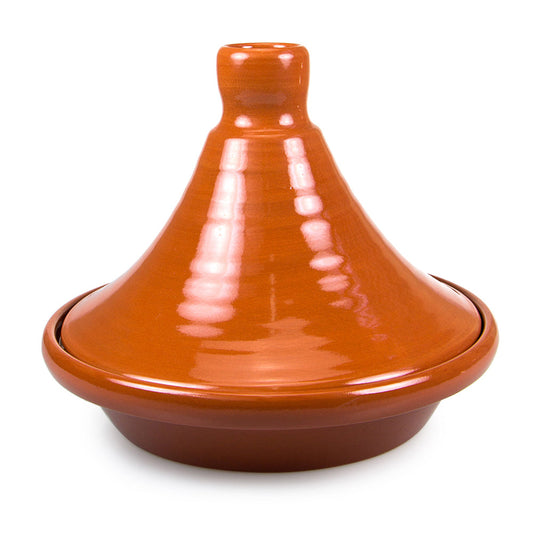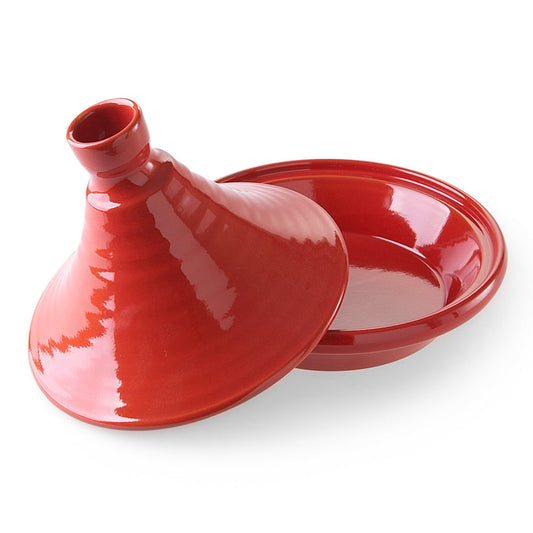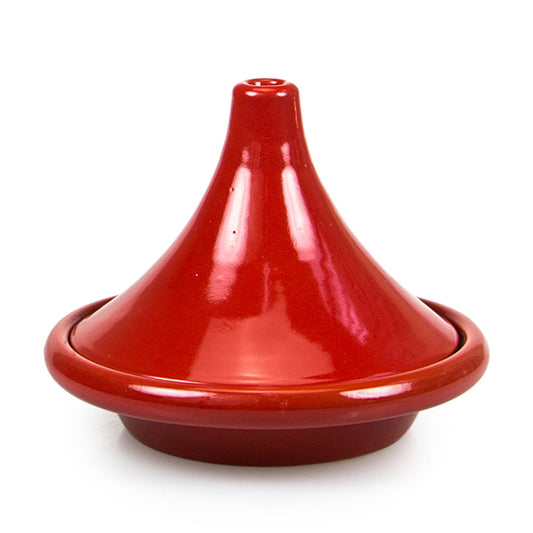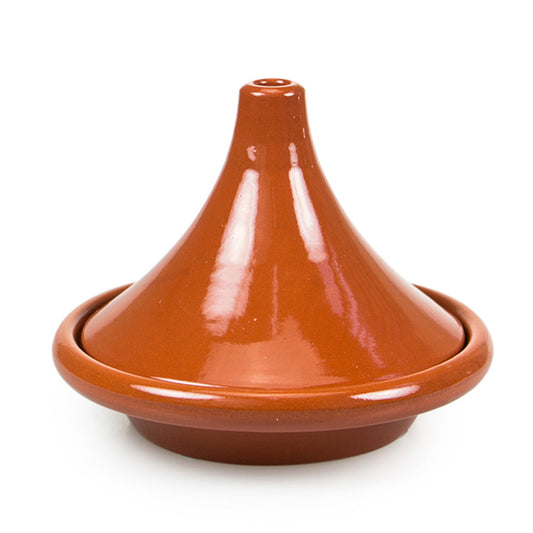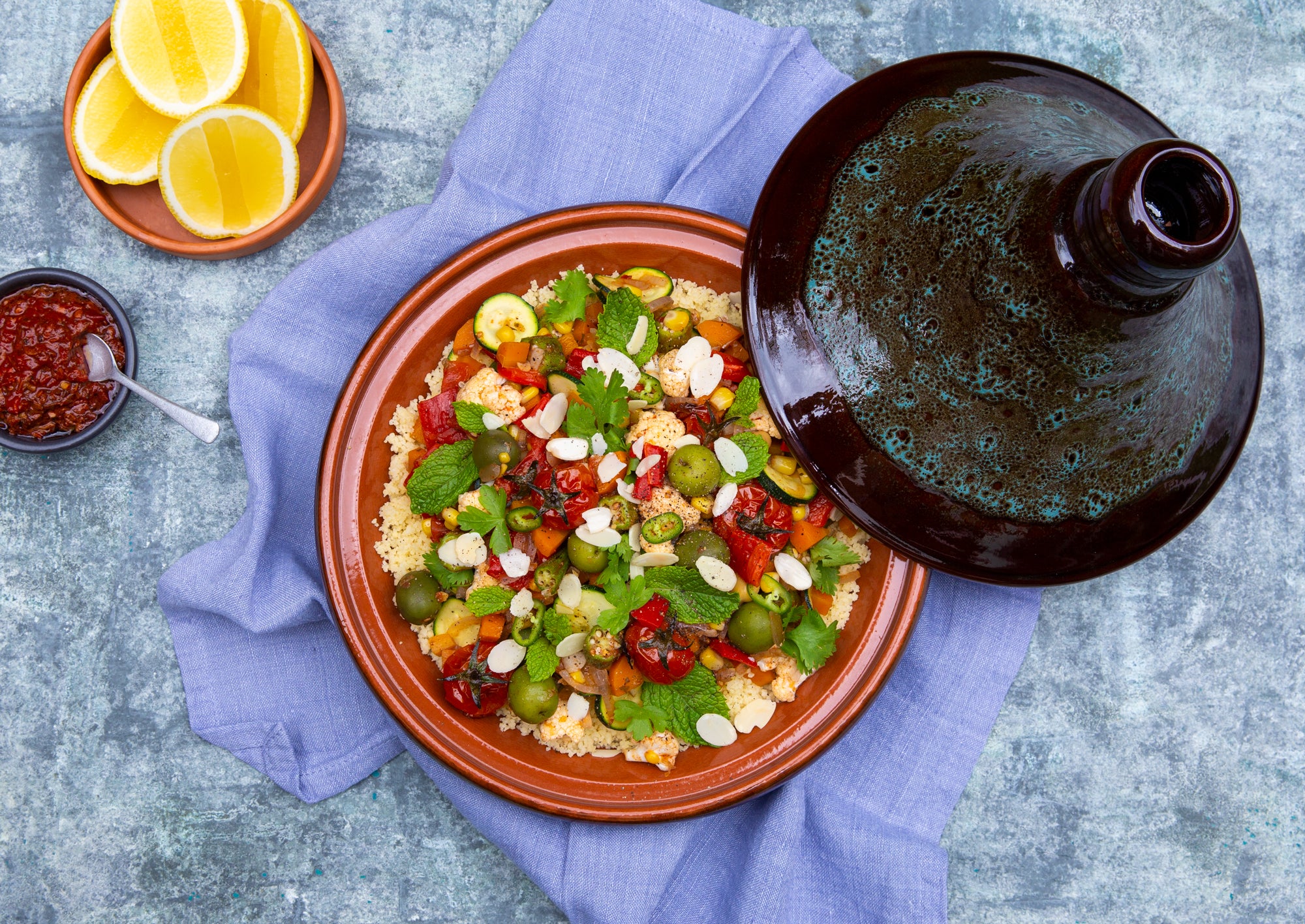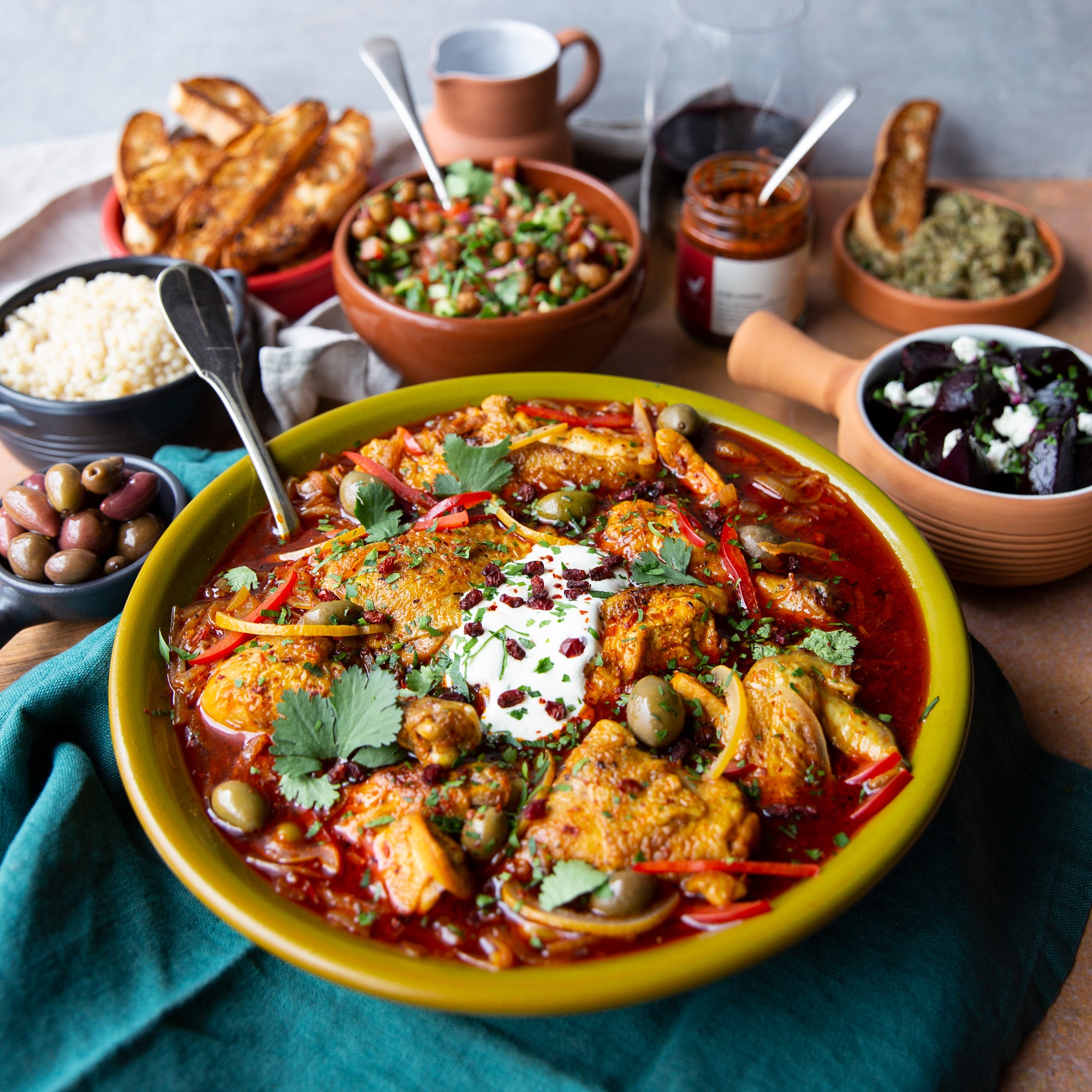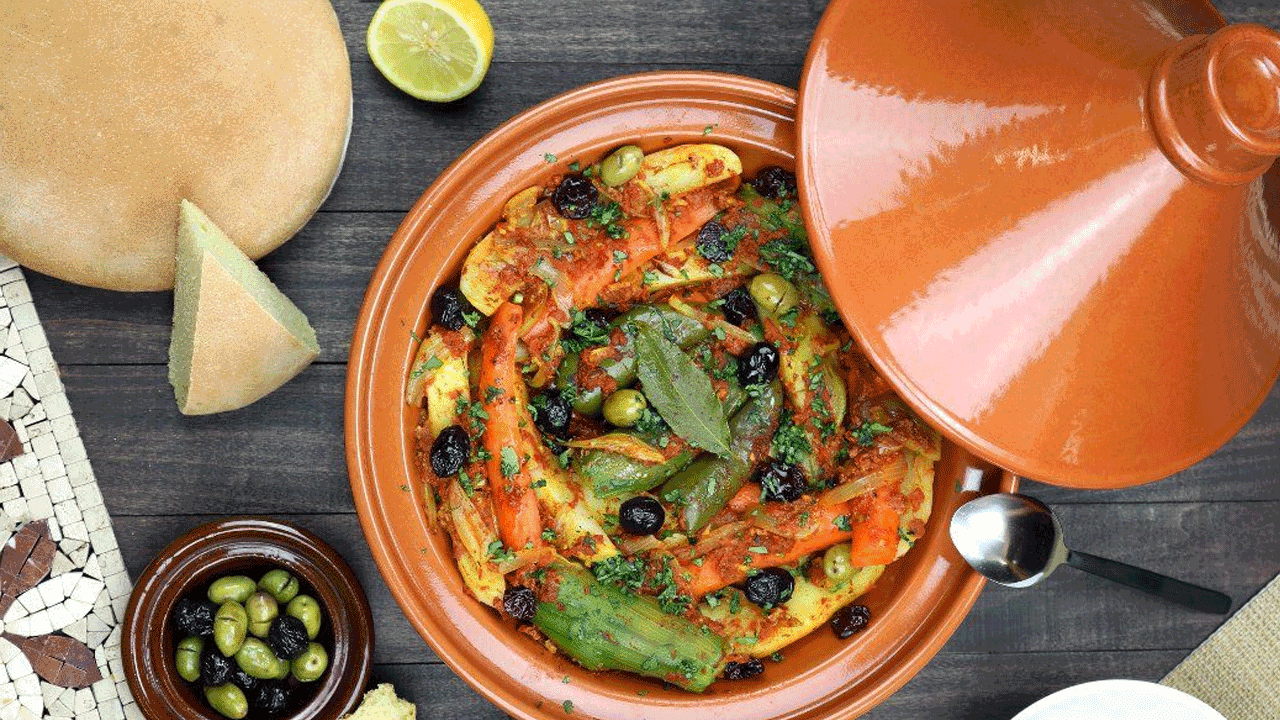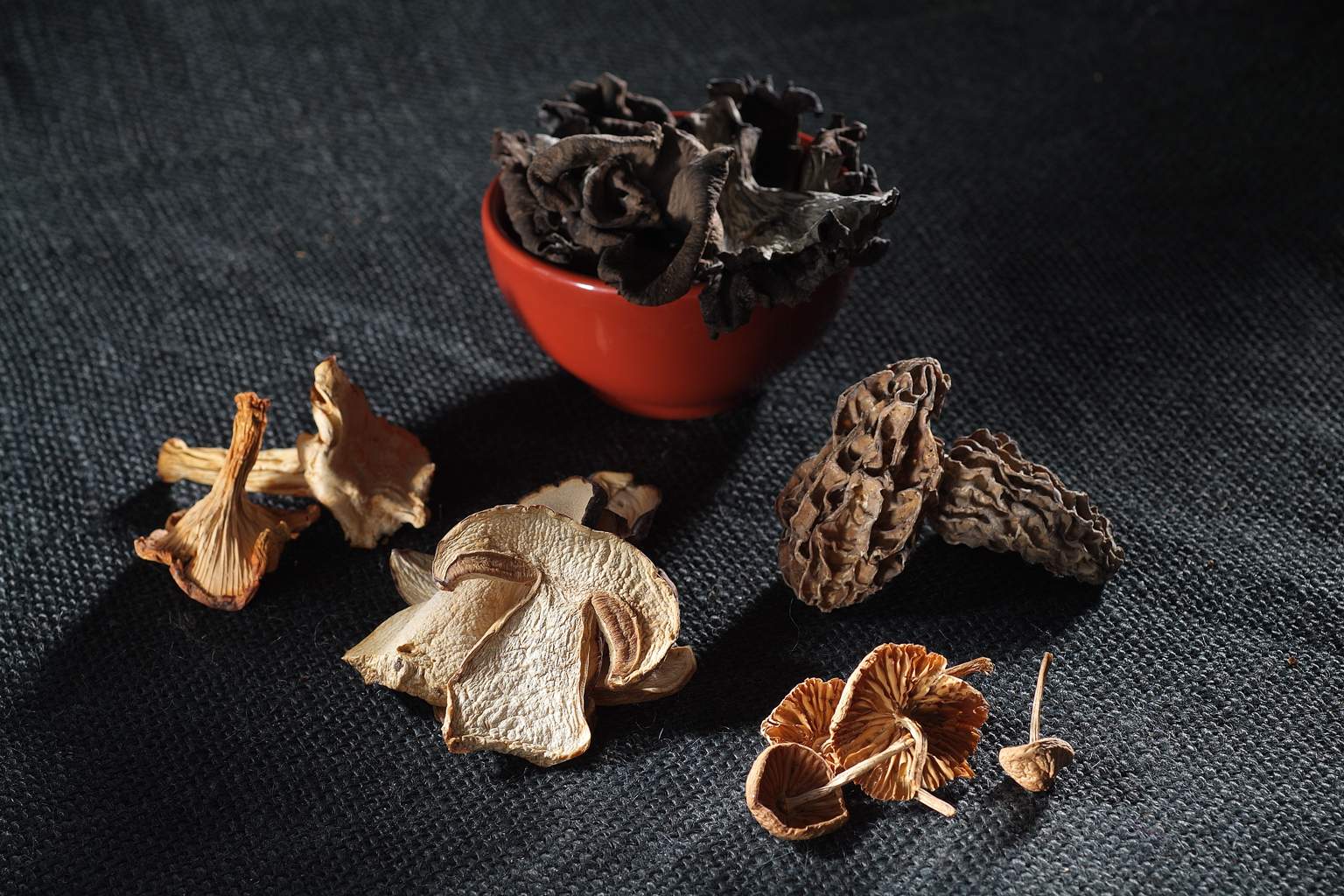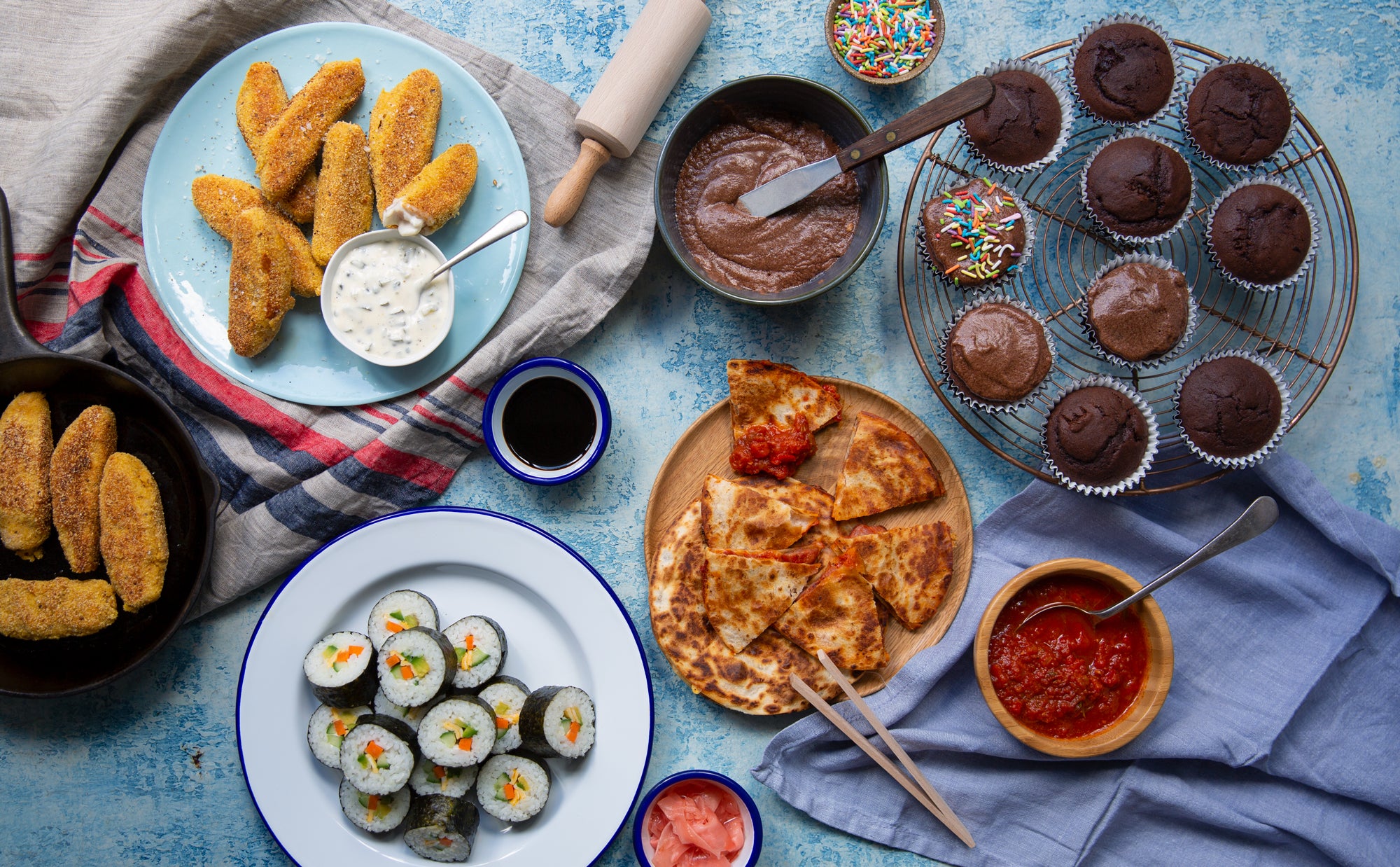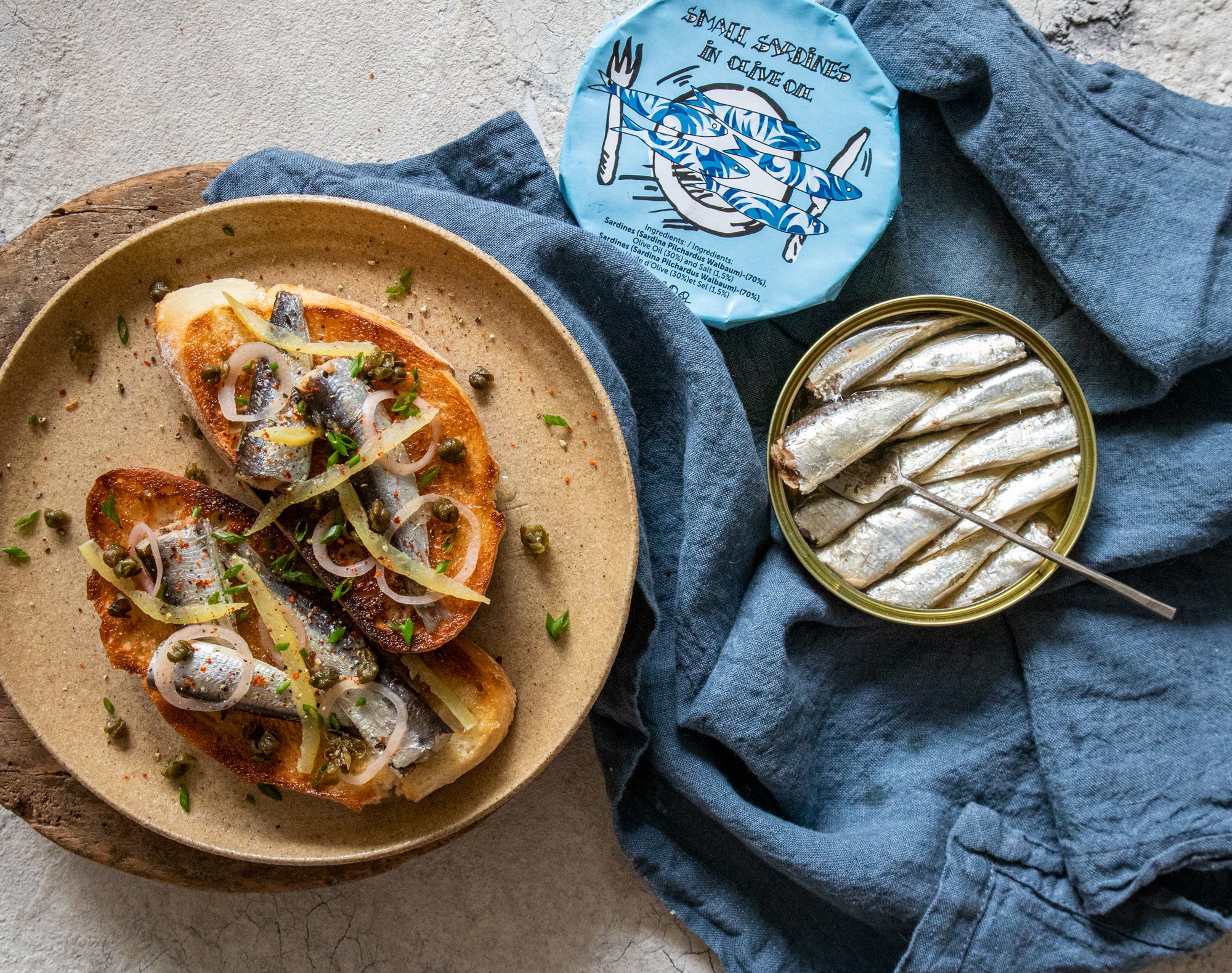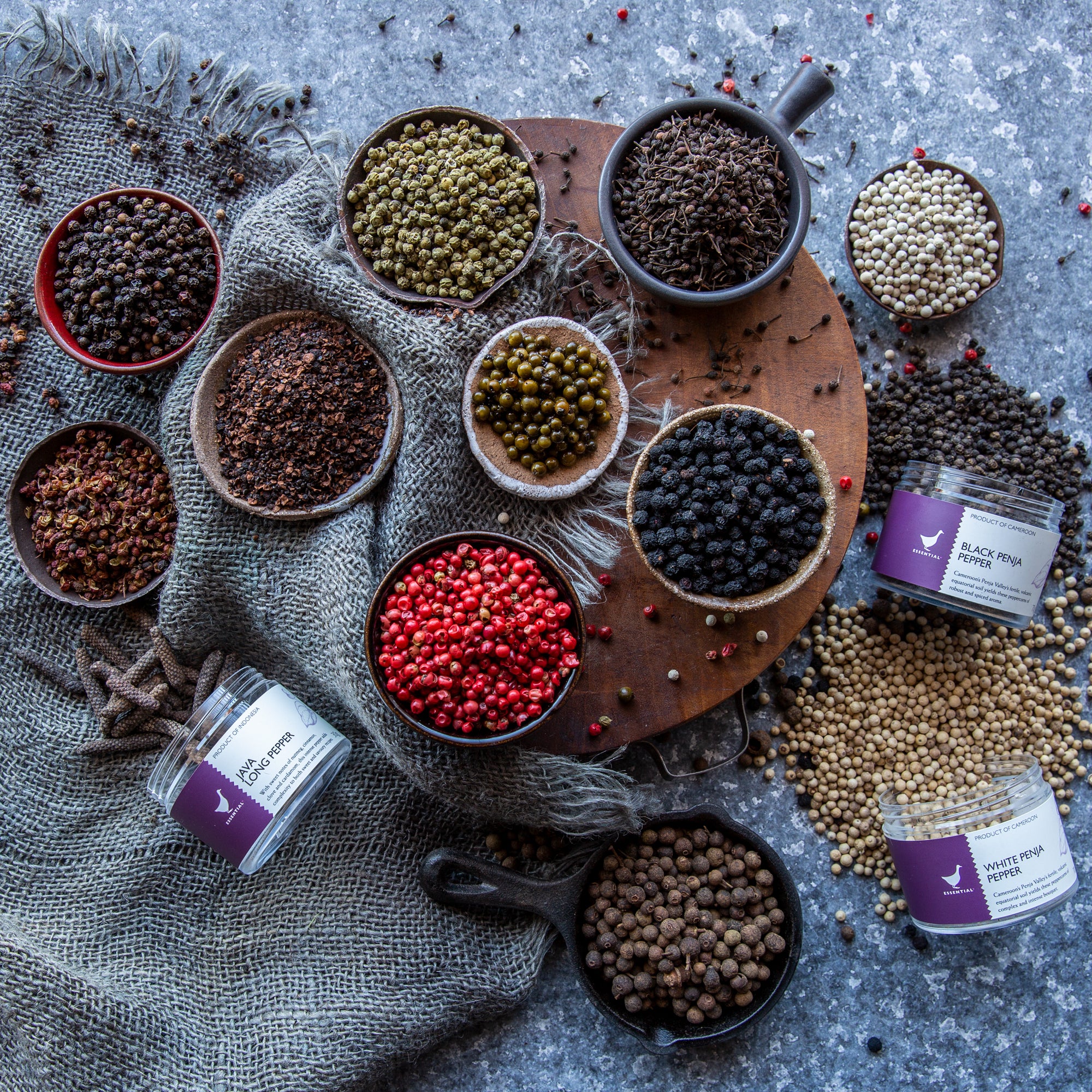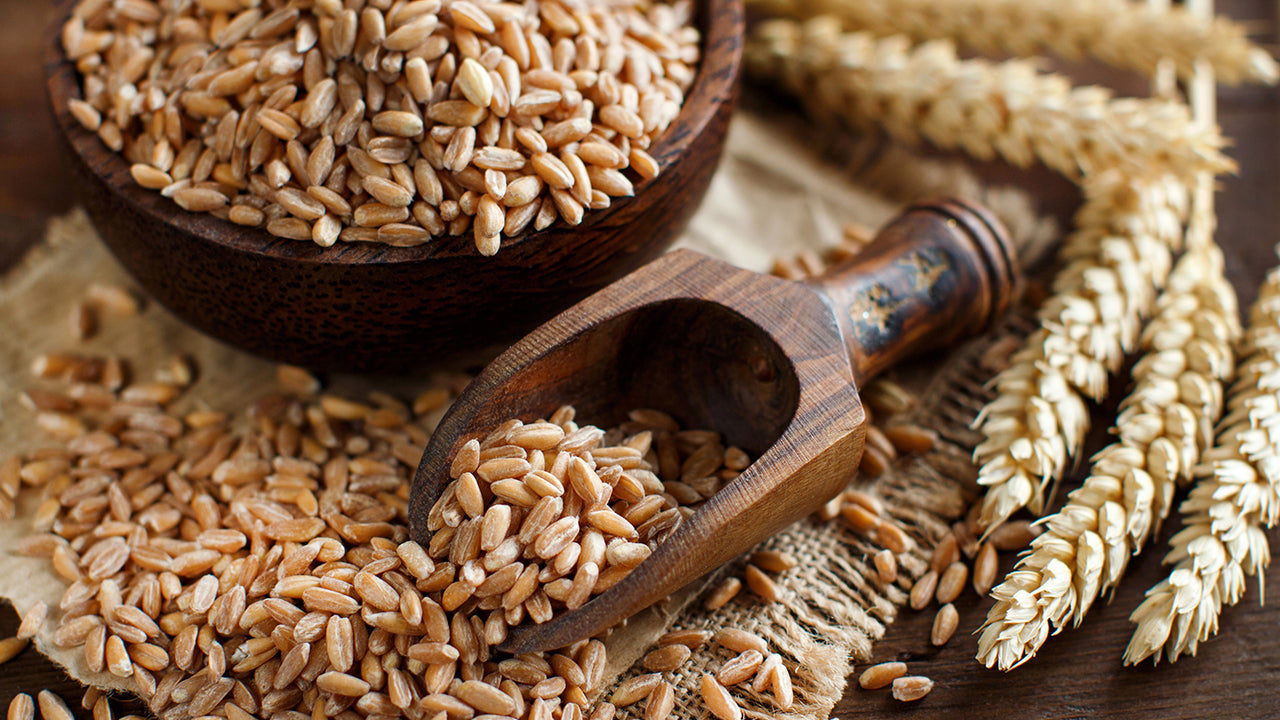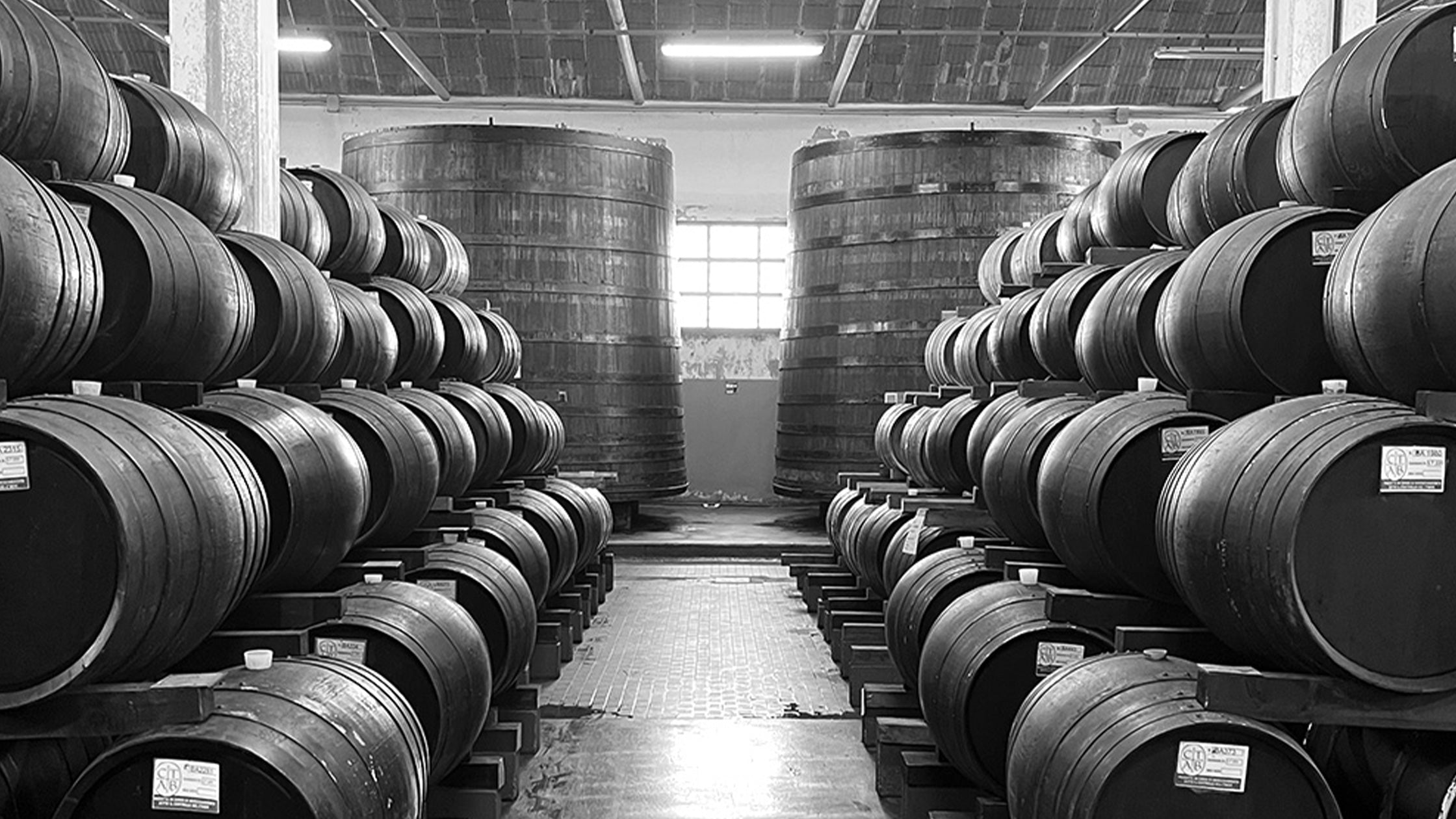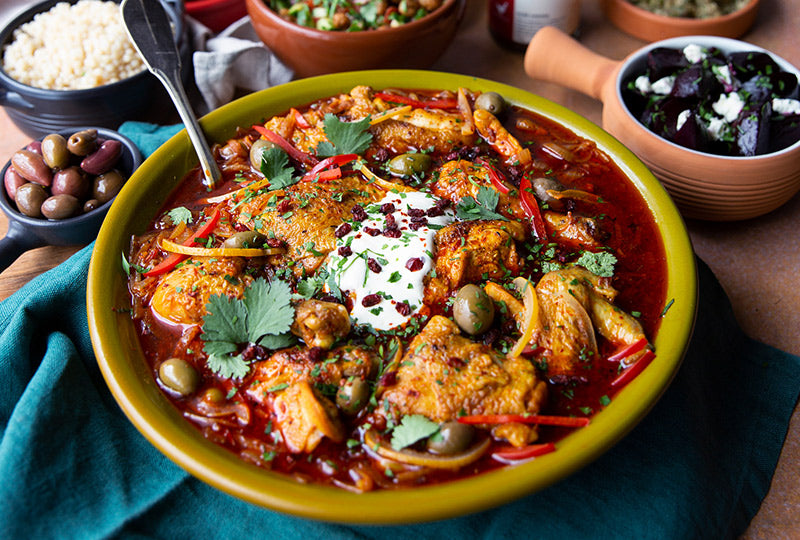
Essential Guide To Cooking In A Tagine
Last updatedMiddle Eastern and North African flavours have soared in popularity in recent years, with ingredients like pomegranate molasses, preserved lemons and harissa becoming staples in kitchens around the world.
If you're among the many eager cooks that have embraced dishes like the humble-but-thrilling tagine, perhaps it's time to try the most authentic version; a tagine cooked in a tagine pot!
This ancient cooking vessel made from terracotta is perfect for slow-cooking, circulating warm air around the vessel while your ingredients gently fuse their flavours together.
In this essential guide to cooking in a tagine, we'll show you how to use and care for a tagine pot, give some of our favourite recipe ideas and provide tips and tricks for getting the most out of the experience.
What is a tagine used for?
Tagine, a traditional Moroccan cooking pot, is most commonly used to slow-cook savoury stews and rich vegetable dishes, but also is used as a serving dish to keep the food warm. Dishes served in a tagine are traditionally enjoyed communally, diners eating by hand, using bread to scoop up meat, vegetables, and sauce.
Tagine cooking is an artform perfected over centuries and, as the ultimate in oven-to-table cooking, is perfect for every occasion, from an intimate dinner with friends to a large family feast.
How do tagines work?
With a conical lid that helps trap steam and returns condensed liquids into the pot, a tagine significantly reduces the amount of water necessary to prepare meals, resulting in richer flavours, tender meats and perfectly cooked vegetables.
A terracotta tagine should be soaked in water for 24 hours before using for the first time. This step moistens the stoneware and helps protect against cracking when your dish is placed on the stove or in an oven.
The length of cooking time for your tagine varies depending on the recipe and ingredients. A vegetable-only tagine might be cooked within an hour, while a braising cut of lamb will keep developing flavour after 12 hours of cooking. Tagine pots provide sustained heat throughout the cooking process and are practical for any duration of cooking.
Seasoning a new tagine
Before a new terracotta tagine can be used, it must be seasoned. This will strengthen the pot and reduce the chance of cracking.
- Soak the base and lid in water for 24 hours.
- Remove from water and air dry. If your tagine has any unglazed areas, rub the exposed terracotta surface with a little oil.
- Put the tagine into a cold oven, then set the temperature to 150C and heat for 2 hours.
- Turn the oven off and allow the tagine to cool completely.
- Hand wash the tagine with warm water and mild dish soap.
- Dry before storing.
How to care for a tagine pot
Taking good care of your tagine pot is essential, not only protecting the cookware from damage but also ensuring your family's health by avoiding bacteria build-up.
To keep your tagine pot in perfect condition, it's always best to soak it in water before using. Soak your tagine pot by placing it directly into a kitchen sink or bathtub filled with water, ensuring all parts are thoroughly saturated.
Tagines can easily crack if heated on a high temperature while empty. For stovetop cooking: always use your burner's lowest setting to start, and for oven cooking: place your filled tagine into the cold oven and then set the temperature.
To clean, always hand wash your tagine in warm water with a mild detergent using a nonabrasive sponge. Allow it to fully dry before storing.
What to make in a tagine pot — recipes
As well as being the name of the pot, a tagine is also the name of the delicious resulting dish! While it's often prepared with lamb, a tagine can also be prepared with chicken and olives, with fish, or simply with vegetables. It can incorporate sweet and savoury ingredients and is often complemented by condiments like yoghurt, preserved lemons and harissa.
Expand your tagine's repertoire with Kefta Mkaouara - traditional Moroccan meatballs. Or use the pot to cook eggs in a rich tomato sauce, best enjoyed with some crusty bread to finish!
Creating your own tagine dish is easy and customisable:
- Soak the tagine pot in water for at least 2 hours before using to protect from cracking.
- Slowly warm the tagine over a low-medium heat, then add extra virgin olive oil, cultured butter or ghee.
- Bloom a selection of spices like cumin, turmeric, ginger, cinnamon or paprika, and add sliced garlic and onion.
- Add your chosen protein, be it lamb, chicken, goat, beef or fish.
- Next, add your favourite seasonal vegetables, dried fruit, nuts, legumes (chickpeas are a common inclusion) or anything else you choose.
- Add water or stock until everything is barely covered without making it too soupy.
- Bring to a boil, then put the lid on and continue to cook gently over a low heat until everything is tender and infused with flavour.
- Season with salt and pepper to taste and transfer directly to the table to serve!
Shop flavourful accompaniments at The Essential Ingredient for your tagine dish
While the tagine pot itself is key to making an authentic, flavourful tagine, the quality of your finished dish relies on using the best ingredients. Taking advantage of fresh, aromatic spices, richly flavoured preserved lemons and harissa paste, and the best meat and in-season vegetables you can afford is critical to making a delicious dish. Shop at The Essential Ingredient for the finest tagine ingredients.
With free shipping on orders over $150, you can have all the ingredients you need delivered quickly. Have questions or can’t find what you need? Contact us — we’d be happy to help.
FAQs
Can a tagine be used on a gas hob?
Yes, you can use a tagine on a gas hob. When using your tagine on a hob, always use a heat diffuser; a simple kitchen gadget that sits between your pot or pan and the flame and helps distribute heat more evenly so your food doesn't scorch.
If you don't have a heat diffuser, you can use a metal ring or an upside-down ovenproof dish as a buffer between the pot and the flame. And remember never to leave your tagine unattended while cooking on a gas stove.
Can a tagine go in the oven?
Yes, you can cook a tagine in the oven. Remove extra racks to make room for the conical lid, start with a cold oven and let the dish bubble away low-and-slow.
Can you use tagine on an electric stove?
You can use a tagine on an electric stove. However, you will need to use a diffuser. A diffuser sits between the pot and the electric stove and helps to distribute the heat more evenly, preventing the pot from over-heating. Without a diffuser, your tagine may not cook evenly.

